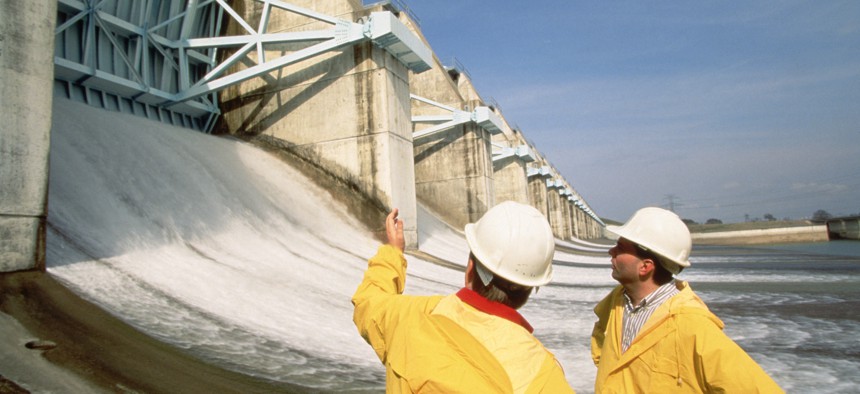10 steps to future water sustainability

William Taufic/Getty Images
Municipal water managers can harness new technologies that will adapt to changes in how water is understood, managed and shared.
Ten technology-based actions can ensure water sustainability into the future, a think tank says.
Using sustainability, technology, economics, governance and social/demographic as drivers, the 26 participants in “Water 2050,” an initiative to support the future of water led by the American Water Works Association (AWWA), boiled the 10 action items into four categories.
Accelerate innovation
One action the group recommends is using technology to break down barriers to innovation, address regulatory compliance and mitigate unintended consequences.
“For example, real-time monitoring of critical control points, coupled with the application of artificial intelligence (AI) for decision-making, can mitigate risk as new technologies are introduced,” according to the think tank’s paper. The group also predicts the widespread use of smart sensors that can immediately identify potential problems with drinking water supplies or chemicals released into the environment and trigger automatic system adjustments or shutdowns
Another action item is for governments to fund collaborations between water systems and technology developers to incentivize investment in innovation and experimentation.
The development of a tech-savvy water workforce will also help spur innovation. Next-gen workers will apply advanced technology applications to a cause like water, which cuts across social and environmental concerns, the report states. Plus, they “will usher in an era of digital solutions that reconfigure many utility roles and demand new expertise,” it adds.
Transform water services
Digital solutions such as AI and machine learning (ML) can help optimize efficiency, operations and water quality. The report calls out digital twins as a way to integrate and automate across water utility functions, and augmented reality technologies can help system operators troubleshoot using sensor-informed holographic displays. “Remote robots may someday correct many issues as they are identified,” the report notes.
Another way to transform services is through real-time monitoring, predictive analytics and material science of water infrastructure. Water managers have long said that infrastructure renewal and replacement is their biggest pain point, but technology could change that, the experts say.
“Developments in predictive analytics and materials sciences will allow for a holistic approach to asset management, condition assessment and regeneration, and the asset supply chain, extending throughout physical infrastructure,” the report states. Combining that with predictive analytics, AI and digital twins could result in “eternal infrastructure,” meaning “adaptable, dynamic and flexible systems with regenerative properties.” For instance, smart pipes will learn what causes them wear and tear so they can be made with materials that can “heal” themselves, the report adds.
The last action item in this category involves the use of in-home and fit-for-purpose technologies, such as hub-and-spoke drinking water treatment models in which some treatment happens at a central location while the rest occurs at a smaller facility. Sensor-equipped in-home and building-scale water treatment will also factor in here, the report states.
Apply technology as the “great water equalizer.”
Two actions fit here: working toward the rapid adoption of technology that results in equitable and sustainable outcomes, and empowering consumers with real-time information to make informed decisions. For the former, “AI and digital twins can help utilities visualize their systems in a new way and identify where services are not equitably distributed,” the report notes. “Just as high-speed internet access has geographical and cost barriers, next-generation water technologies will have their own accessibility challenges.”
For the latter, a continuous stream of data will revolutionize decision-making for local leaders, water utility managers and the public. Consumers will know whether water quality meets government—and their own—standards, for instance, and take appropriate action.
Secure the future
Public trust is part of the fourth and final category, which also addresses cybersecurity. It calls on water officials to create a customer data bill of rights so consumers know what data is being collected and how it is being used.
The 10th recommended action is to establish a water community system and culture in which cyber risks are proactively and uniformly addressed. “The challenge in the coming decades will be to engineer robust and resilient automation and data networks while maximizing efficiency and safety through revolutionary new technology,” the report states.
All the actions support the US Water Alliance’s “One Water” initiative. It’s the idea that “all water has value and should be managed in a sustainable, inclusive, integrated way.”
Stephanie Kanowitz is a freelance writer based in northern Virginia.





